I have been negligent in keeping up with what’s blooming in the garden since the start of June, so with little chatter we’ll move right into the garden, and what’s blooming. Today will cover trees and shrubs, and in a few days perennials, since the list is too long for one sitting.
Ask a gardener and you’ll be told that summer begins with the start of June, when heat and humidity become more regular and most of the spring bloomers have faded. Indeed, the change in seasons has been apparent this year, and though there has been adequate rainfall the stress of warmer temperatures on lawn and garden has been evident. Summer bloomers are a a tough lot, suffering the worst of heat, humidity, and drought, and often blooming for extended periods, better to spread their seed in quantity so that a sufficient number might germinate even in the hottest and driest of times.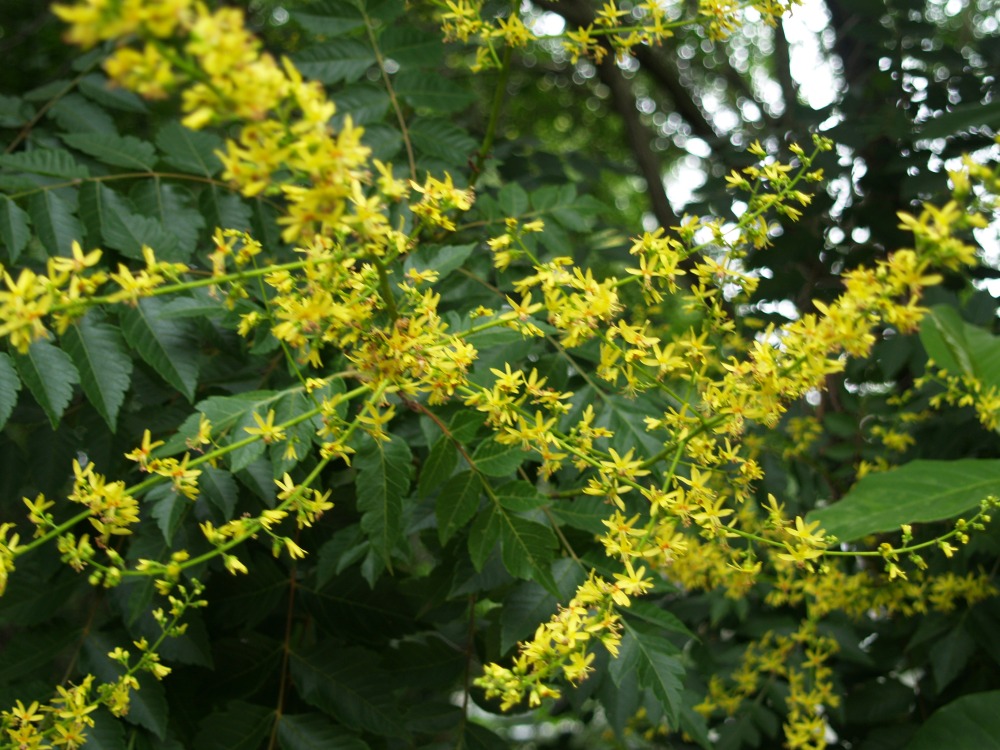
Most spring flowering trees are past bloom, though ‘Wolf Eyes’ Chinese dogwood and the three winter damaged Southern magnolias have a few remaining, but the Goldenrain tree (Koelreuteria paniculata, above) and Stewartia (Stewartia pseudocamellia, below) are in full bloom. I have expressed my disdain for the goldenrain, splendid in bloom, but a dreadful nuisance that seeds about the garden. Stewartia, on the other hand, is a delightful tree with white camellia-like blooms for several weeks in June and papery reddish-brown exfoliating bark. It is quite slow to become established, barely growing an inch for several years after planting, but now the one in my garden grows like a weed.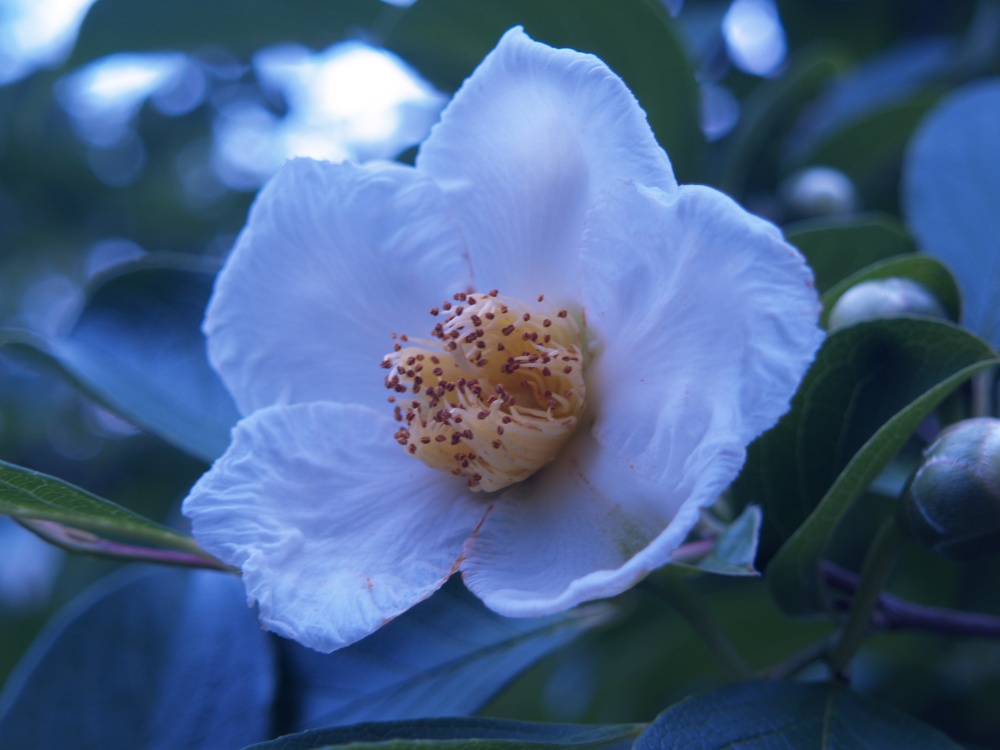
The most vigorous of the crapemyrtles, the tall growing, white Natchez (Lagerstroemia x fauriei ‘Natchez. below), is beginning to bloom. Natchez should be given adequate space so that it doesn’t require severe annual pruning that results in long flexible branches that bend to the ground under the weight of its huge blooming panicles. Crapemyrtles are often sited incorrectly so that they must be chopped back annually lest they block roads, driveways, or walks, and the shame is worse because there is such a range of mature sizes that there is an appropriate cultivar for nearly every situation.
The blue and white mophead hydrangeas (Hydrangea macrophylla ‘Penny Mac’, below), lacecaps, and Oakleaf are blooming, as is the variegated Maresii that suffers annual winter damage to its flowering branch tips and rarely blooms. Although the past winter had abnormally high snowfall, the snow insulated shrubs that were covered, and our lowest temperatures were relatively moderate, so there was little damage to plants that are a bit tender. Most of the mopheads are remontant cultivars, so they will continue to set new flower buds through the summer until frost.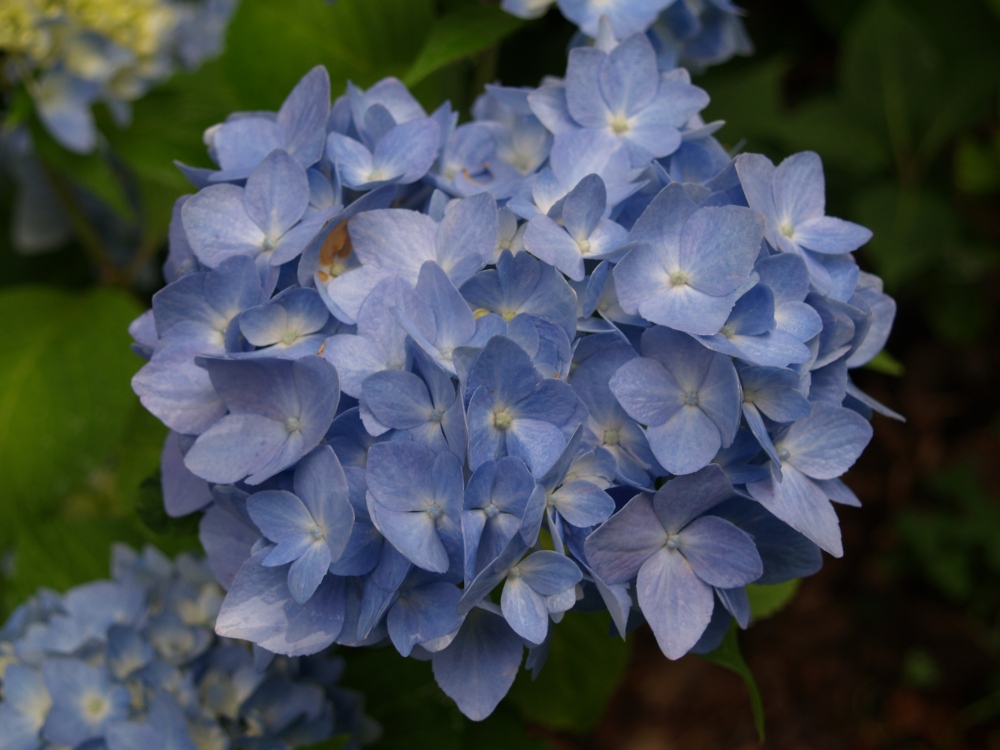
There are several cultivars of yucca in the garden, and the filamentosa types are blooming on six foot spikes. Filamentosa yuccas (in bloom, below) are quite cold hardy and drought tolerant, and can be distinguished by the threadlike fibers at at the leaf’s edge. The ones in the garden have variegated leaves, variations of green and yellow, and all are quite vigorous as long as they are not planted in damp ground and get sun for a part of the day. Yuccas are valued for their spiky form, the flowers an afterthought, but welcome nonetheless on these carefree plants.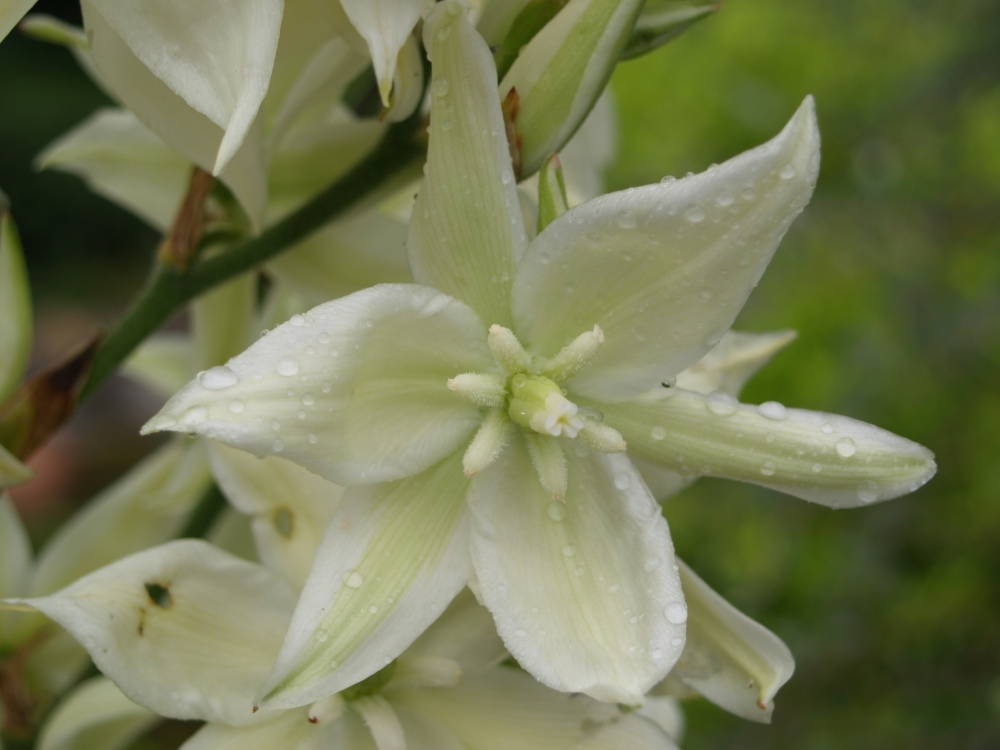
‘Little Princess’ and ‘Gold Mound’ Japanese spireas (Spirea japonica ‘Little Princess, below) are blooming, and are nearly maintenance free, needing only a hard shearing once every couple years to keep tidy. They prefer full sun, but will grow and bloom just fine in a half day or less. Little Princess has green foliage and will work in any garden, and in any soil, but the bright yellow Gold Mound demands some care to avoid clashing colors. I have never paid much attention to color combinations, and somehow have never heard harsh comments that this clashes with that.
In my garden there is no spraying for bugs and fungus, mildew or black spot, so for years I avoided roses that required regular attention and chemical controls to maintain their good health. Occasionally a low maintenance rose would be touted, and I’d try it and quickly discard it when leaves became spotted in June, so I’ve gardened for forty years and grown no more than a handful of roses, until Knockout roses were introduced. I have little doubt that rose people scoff at Knockouts as overused and inferior, but I have no intention of cutting a rose from the garden, and don’t care about scent, so sturdy, carefree Knockouts work splendidly for me.
Besides Knockouts in red, pink, and yellow there are low growing Drift roses in the garden, which seem very resistant to the typical rose ailments, a yellow ‘Carefree Sunshine’ that compares to the Sunny Knockout (but with superior yellow blooms), a few Flower Carpet roses that are cut nearly to the ground when the foliage is spoiled in mid-summer, and a few odds and ends that hold their own with only mild problems. Beginning in mid May there are roses blooming in the garden, and often continuing into November. Whether rose people consider them worthy, or not, these are wonderful, long blooming, and disease free shrubs.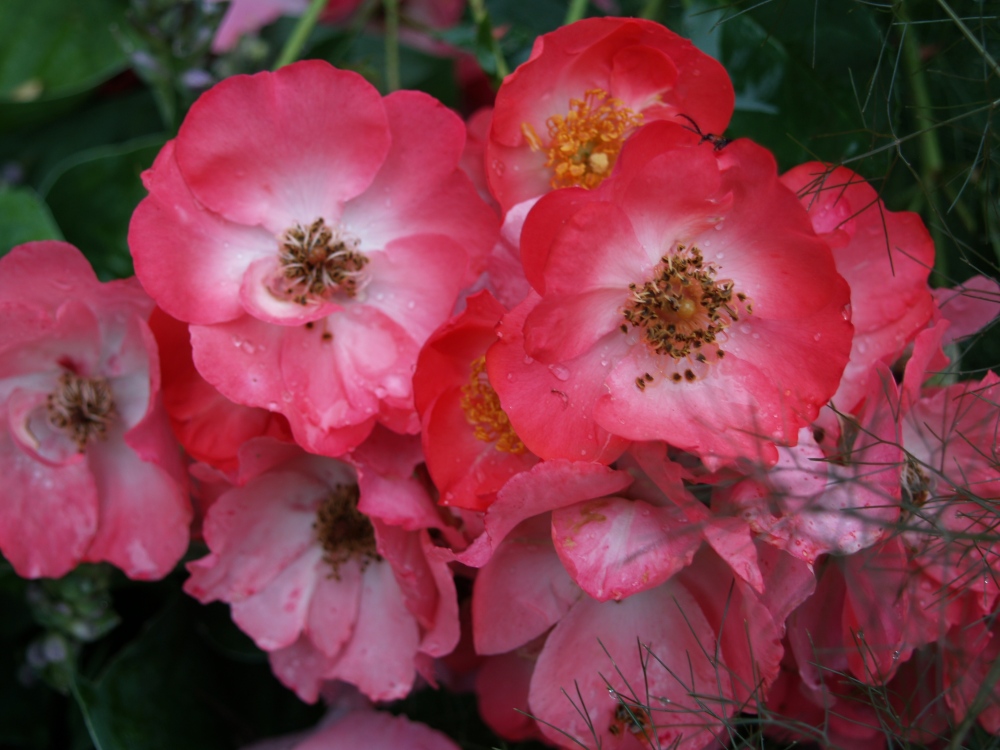
The list of perennials blooming in the garden is much too long to continue further today, so in a few days we’ll continue our tour with the last of the Japanese iris to flower, then daylilies, coneflowers, hostas, and whatever else might pop into bloom in the coming days.
Wow …. your website and phots are wonderful! Thanks for sharing!! I’m doing a mass overhaul of our beds and need to learn a lot!! Thanks again!!